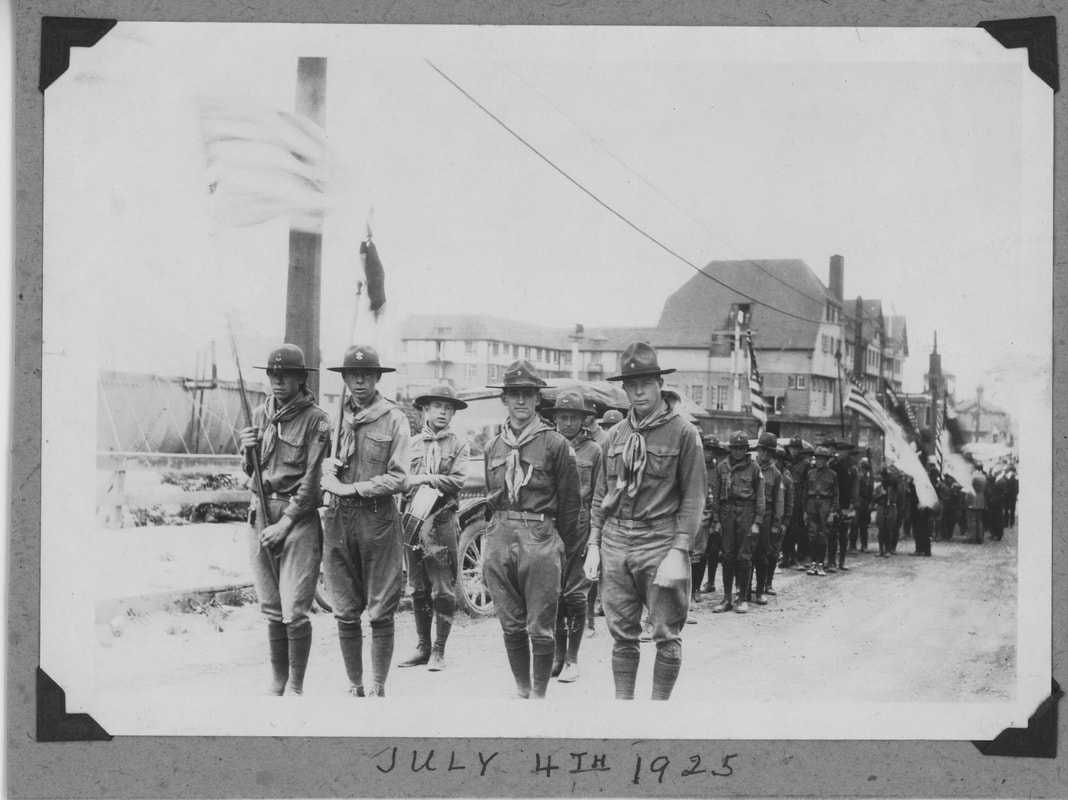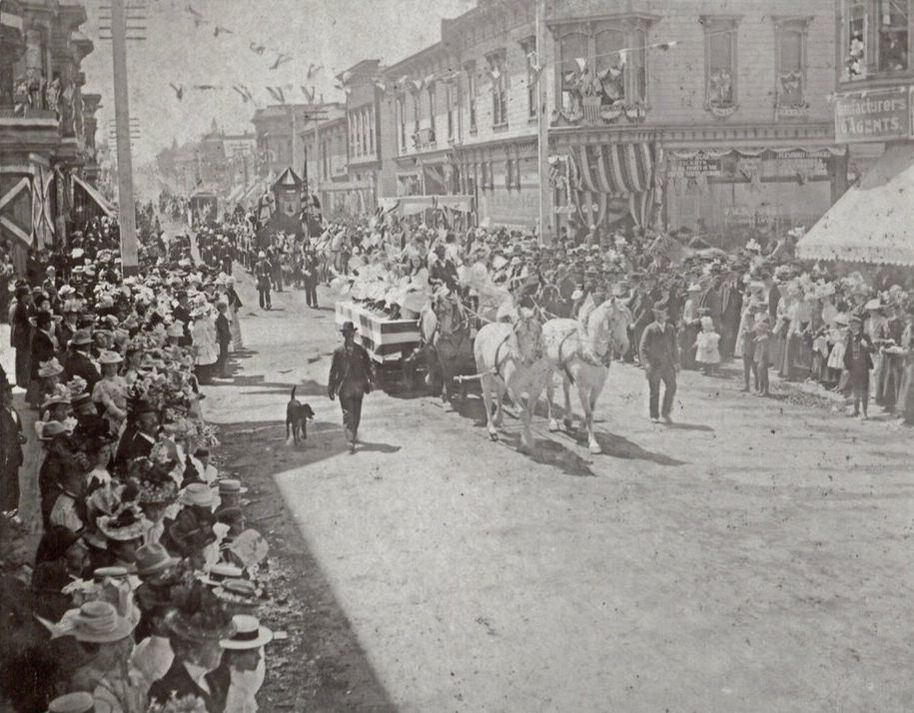The Great Fer-Don!
| On August 3, 1908, Ferdon arrived in Eureka with pomp and circumstance in brightly painted horse drawn wagons. He set up what sounds like a circus tent at 4th and I Streets and an office in the Weck building at 311 F Street and the following day held a parade traveling around town with a band called the Great Diamond Cluster Band for a few hours before ending at the circus tent for the main event. An estimated 10,000 people came out to Fer-Don’s act, which began with him throwing silver dollars into the crowd. The main act was Fer-Don discussing his staff of European medical professionals at the Weck Office healing of members of the audience. Ferdon told reporters that he kept files on the people who were treated to prove his work wasn’t a fraud, oftentimes referencing specific people from the community as proof of his truthful work. He said he also published the names and addresses of people who were healed by his practice so people could investigate for themselves. In September, Ferdon left Eureka and headed south to Santa Rosa. |
| Jeff Elliot of I See by the Papers a blog on the history of Sonoma County, claims “Santa Rosa had never seen a scam artist like James M. Ferdon”. From how Fer-Don’s show was described in Eureka, that claim seems a bit excessive. Elliot elaborates on his claim- part of Ferdon’s scam was that he would advertise in the papers using legitimate looking newspaper articles embedded with the regular news (at the time, ads were located on the back page or lower half of the newspapers rather than mixed in with articles). The realistic articles could easily trick readers and added a new dimension of slight of hand to Ferdon’s con. It’s very likely that Ferdon ran articles like these locally while he was in Eureka. Some papers refused to run the article-advertisements, and it was oftentimes these papers that would investigate Ferdon, discover his costly ‘treatments’ (which sometimes cost more than a person might make in a month at the time) were more magic tricks than anything else, and eventually run him out of town. Ferdon addressed the people who ran him out of town with this statement: "[E]nmity always follows success, and there is always a certain class of humanity ready to cry 'humbug,' 'fake,' and 'quack,' but such howlers and defamers of honest characters are very seldom successful in any line of business because they do not attend to their own. They are too busy sticking their noses into the affairs of others." |
| Ferdon was issued a warrant for his arrest, in Washington after spending time running his con there and went underground before reviving the con a few months later. He was later fined in Sacramento, bailed out by his wife, and disappeared to shapeshift into another con. His later namesakes included “The Great Lavita” which was an identical con to “Great Fer-Don” and “the Great Pizaro” selling cactus juice and “great Catarrh Remedy” of Borax and salts. He was later jailed at a federal penitentiary for his medical scams and died in 1944. |
Chief White Elk
| Edgar Laponte, later known as Chief White Elk, was born in Rhode Island. He started his con work early like Ferdon did, at age 14 walking around town asking other businesses to donate and help save another business that was in need. He was caught by the police and sent to boarding school in hopes of straightening out the boy- it didn’t work. His next gig was when he was in his 20s dressing up as a Native American at Coney Island to attract attention to an attraction. |
| In this persona, he was a movie star, war hero, singer, speaker of 21 languages and dressed in a Plains buckskin, including a war bonnet made of “eagle” (turkey) feathers. He traveled around raising money for War Bonds to support the ongoing War, and appears at a fundraiser at Holmes Flat in Southern Humboldt on July 4, 1917, as documented by a photo donated to the Humboldt County Historical Society by Velma Childs Titus in 2017. Next to the “Chief”, there is a short woman whom he later married. Emma Freeman took photos of the duo among the redwoods in Humboldt County, and these photos appear in the Clarke collections. |
| In his disguise, Laponte married Bertha Thompson, daughter of Lucy Thompson of the Klamath tribe and author of “To the American Indian”. The extravagant wedding took place in 1918 at the Capitol in Salt Lake City with full military honors, an attendance of 5,000 people, 31 piece band and 10 bridesmaids. It didn’t last, as Laponte was an alcoholic and cocaine user, and, depending on who you ask, Bertha left or Laponte abandoned her. It wasn't until years later that Bertha hired an attorney to learn more about the Chief's Cherokee ancestry- and learned that he was a conman. |
Entertainers, Hucksters, and Stunt by Glen Nash, Humboldt Historian, March-April 1986
A Big Welcome to the Flimflam Man and On Tuesday the Monster Came to Town by Jeff Elliot from I See From the Papers
Edgar Laplante: Imposter by Rupert Taylor
Living History: Chief White Elk was a show-stopper in Salt Lake City by Ardis E Parshall, Salt Lake Tribune
War Bonds Rally at Holmes Flat: Who is the Interloper in this Picture?, Humboldt Historian December 2014
Newspaper clippings found through UC Riverside's California Digital Newspaper Collection, which can be accessed here
"The Black Lies of Chief White Elk" in Both Sides of the Bluff, Jerry Rohde
See also:
Snake Oil, Hustlers and Hambones: The American Medicine Show by Ann Anderson
King Con: The Bizarre Adventures of the Jazz Age's Greatest Imposter by Paul Willetts
White Elk, Black Shirt by Paul Willetts, Powell Books


















 RSS Feed
RSS Feed